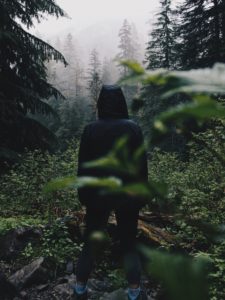Lately I’ve been thinking about how much living a life resembles writing a story.
We love our stories, whether they be in the form of songs, film, books (digital or tangible) or spoken language. We love the nonfiction of history and science, memoirs, and fiction. Story has anchored me to life since before I learned to read.
During my writing hours I’m engrossed in creating characters and weaving them together. One scene gives rise to another. There must be action and movement. There must be some kind of story logic. Every word must help drive the story forward. Characters need to be believable and recognizable in their behavior and growth. As an audience, we want to see characters change and learn. We want to commiserate with and applaud our favorite characters. We want them to do well.
As a writer, I don’t have total control or knowledge of my story. I create a rough outline, create characters, choose a setting, and start writing. If I’ve done well with my characters, the act of writing animates them into becoming collaborators rather than pawns. I’ve learned the characters who remain passive and one-dimensional are weak and need to be reworked. I may have a direction I want my characters to go in, but strong ones frequently refuse to comply with my outline and notes and we wind up sitting glaring at one another with our arms folded, my character looking out from the laptop screen at me at the keyboard. The flow of the writing stops then, until I set aside my rigidity and work with other possibilities.
This is exactly like life. How often have we gone down a blind alley and wound up with our noses against a brick wall but been too stubborn or exhausted or despairing to retrace our steps and choose another direction? How often have we taken a well-worn path of anxiety and wound up in a trackless desert or marsh, floundering, miserable and lost?
As we journey through the story of our own lives, however, our view is from the bottom of the valley rather than from a high mountain from which we can see the whole thing. We live our stories one moment at a time, losing sight of the beginning and never knowing the end until we reach it. Our lives are filled with things like visits to the bathroom, brushing our teeth, lost car keys, bills, errands, flat tires and dead car batteries, and colds.
But these details, so ubiquitous in what we call “real life” add nothing to a great film or book. They’re not sexy and entertaining. Nobody wants to watch Wonder Woman floss her teeth or cut her toenails. We don’t see our favorite heroes spending hours hunched over their phones, tablets and games.
We can’t tell the sweeping story of our lives while we’re living them. We know when things feel good or bad, but we don’t look beyond that most of the time. We’re more concerned with our discomfort and disappointment than we are with the inherent ebb and flow of life.
We don’t think about what our story requires. We don’t see our most difficult times as turning points essential to our story.
As a writer, however, I know tension, conflict and obstacles are necessary. They create movement and growth. They create change. They force characters to reveal weaknesses and summon strengths. They teach resilience and test faith.
What would it be like if we could watch our own lives as though watching the next big superhero movie? What if we could revel in the setting we find ourselves in, even if we decide to escape it and find a new one? What if we chose to feel inspired by the unpredictability of our unfolding lives and heartened by the way obstacles shape us?
What if every experience was an essential, beautiful part of our story?
What if . . . ?
All content on this site ©2019
Jennifer Rose
except where otherwise noted
© 2019 – 2022, Jenny Rose. All rights reserved.



